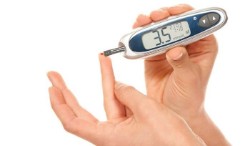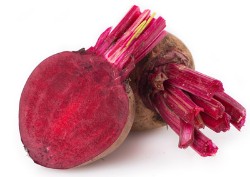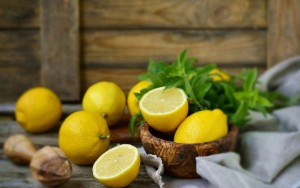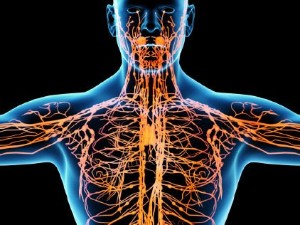9 facts about the benefits and harms of beetroot and beet juice for the liver
 The liver is a vital human organ that needs special attention.
The liver is a vital human organ that needs special attention.
By following a healthy diet and ingesting vitamins and elements beneficial to the liver, it is possible to significantly improve its functioning and reduce the risk of developing many diseases.
Is there any benefit from beetroot for this organ or not? Can it harm the liver if abused?
Modern research confirms that beetroot and beet juice have hepatoprotective properties, that is, they have a positive effect on the liver, protecting it from harmful substances and maintaining its normal functioning.
Content
9 useful properties
The benefits of eating beetroot and beet juice for the digestive tract and liver are as follows:

- Rejuvenate the liver with a powerful dose of vitamins that destroy free radicals.
- Contribute to the removal of harmful substances from the liver due to the content of nicotinic acid.
- Relieve inflammatory processes.
- Help the movement of bile, stabilizing digestion and preventing the slagging of the body and liver cells.
- Helps to eliminate cholesterol by normalizing fat metabolism.
- Protects against cancer cells by destroying pathogens.
- Make it easier to digest food. They contain a large amount of fiber and acids.
- Removes fluids and salts from the body.
- Strengthen and clean the vessels due to the content of sodium and calcium.
Possible harm and contraindications
Beetroot consumption does not harm a healthy person, but there is a risk of negative effects in the presence of such diseases:

- Urolithiasis. Beetroot contains substances that can provoke the withdrawal of stones, which is very dangerous, especially in the chronic form of the disease.
- Diabetes mellitus. The vegetable tastes sweet, as it contains a large amount of vegetable sugars that affect blood sugar levels.
- Diarrhea. The root vegetable has a laxative effect.
- Hypotension. Beetroot has the ability to lower blood pressure.
- Heartburn and increased acidity of the stomach. Due to the high content of acids, it can cause problems with the gastrointestinal tract.
- Kidney diseases. The use of root vegetables is contraindicated due to the content of oxalic acid.
How to take it — 7 recipes
Beetroot can be used to prepare effective means for cleansing the liver and removing toxins.
Before the procedure, it is necessary to clean the intestines, then prepare the body. To do this, you need to exclude alcohol, nicotine, fried and smoked foods from your diet. It is necessary to eat healthy food rich in fiber, steamed or boiled for two weeks.
You can clean the liver using different methods, depending on the method of cooking beets.

- Raw or boiled root vegetable. Beetroot in one form or another is used as a salad, which is seasoned with vegetable oil. You can eat 1 kg of boiled and 0.5 kg of raw root vegetables per day. Many people are happy to cook and consume beetroot soup: it is necessary to cook and chop vegetables (1 potato, 4 carrots, 2 cups of beetroot and cabbage, 0.5 cups of onions). Put everything in a saucepan, pour water (as when cooking soup), bring to a boil and cook over low heat until ready. Add the herbs, salt to taste and 3 tablespoons of apple cider vinegar. Let it brew for an hour on the stove.
- Beetroot juice. This is the most popular method that does not require special preparations and costs. You just need to drink freshly squeezed juice. How to drink it properly? If there are no serious contraindications, you can take it as much as you want. The course of admission should be no more than three weeks. During this period, the liver will be cleansed of toxins and stones.
- Kvass. For its preparation, you will need a three-liter jar, into which you need to throw the washed and diced beetroot in the amount of three pieces. Add 0.5 kg of sugar and 2 tablespoons of flour. The mixture must be infused for two days in a dark place at room temperature, stirring occasionally. Then add 100 ml of water, 4 tablespoons of sugar and 700 g of raisins, stirring daily. After a week, we pass it through the filter. After all these actions, a liter of beet kvass is obtained. For a full course of purification, 3 liters of kvass are needed, which is taken by a tablespoon 30 minutes before the main meals. Next, the body needs to take a break of three months, only after that repeat the procedure. Such cleansing can be carried out for a whole year.
- Decoction. You will need one root vegetable, which must be washed, put in a saucepan, pour three liters of water and cook until half cooked (a liter of water should remain in the pan). Grate the boiled beetroot on a fine grater. The resulting puree is placed in the same container with a liter of water and cooked for 20 minutes. Let cool and pass through a sieve. We use according to the scheme: 200 ml every 4 hours, on the liver & 8212; heating pad.
- Mix beetroot, radish and carrot juices. An excellent remedy for the treatment of the liver at home. These ingredients are mixed in equal quantities. The mixture is stored in a cool, dark place. Take according to the scheme: 1-2 tablespoons half an hour before the main meals. The course of admission is from 2 to 3 months.
- Balls with an apple. For cooking, you will need a medium-sized apple and a beetroot of the same size. They must be grated on a coarse grater, rolling small balls out of the resulting mass. You need to eat such balls before the main meals, three times a day. The course of this therapy can range from one to two weeks.
- Cleansing method with kefir. For this therapy, you will need the following products: boiled beetroot (1 kg), kefir (1 liter) and mineral water without gases (1.5 liters). All these products must be consumed during the day. This procedure can be performed three days in a row, twice a year.
Features of use in diseases
Due to the content of a large number of useful substances, beets are recommended for use in diseases of the body in general and the liver in particular. The ancient Chinese considered the root vegetable to be a cure for diseases. But is it possible to eat beetroot with a sick liver? What do the doctors say about this?
Hepatosis
 Hepatosis is a disease of liver cells in which an abnormal metabolism occurs. It can be fatty and pigmented. It occurs due to the intake of large amounts of fats and carbohydrates into the body, the toxic effects of alcohol or diseases of the endocrine system.
Hepatosis is a disease of liver cells in which an abnormal metabolism occurs. It can be fatty and pigmented. It occurs due to the intake of large amounts of fats and carbohydrates into the body, the toxic effects of alcohol or diseases of the endocrine system.
With hepatosis, it is possible to follow a beetroot diet. Usually this diet is designed for seven days. Due to the low carbohydrate content in beetroot and its beneficial properties, such a diet will help not only to lose weight, but also to clean.
Cirrhosis
Cirrhosis of the liver is a chronic disease accompanied by organ destruction.
In case of an incipient illness, it is recommended to follow a diet according to M. I. Pevsner. This diet includes a whole list of healthy foods, vegetables and fruits. The diet is balanced in proteins, fats and carbohydrates, and limits salt. Diet No. 5 speaks about the benefits of eating beetroot, but boiled or baked, mashed.
The root vegetable normalizes fat metabolism, removes excess fluid from the body, helps to produce bile and has a positive effect on the circulatory system.
9 more important tips
In order for the liver to function normally and support the whole body, it is necessary to follow simple recommendations:

- Eat right. Recommended five meals a day. Portions should be small. Fried, spicy, canned dishes should be excluded. Try not to overeat, especially in the evening, so as not to overload the liver with unnecessary work.
- Observe the drinking regime. An adult needs to drink 2 liters of water a day. It is better if it is filtered. Water removes harmful compounds from the body, thereby helping the liver.
- Feed the liver with the right foods. Eating vegetables, fruits, greens, and berries is very useful for liver cells. It is also necessary to include various cereals and fermented milk products in the diet.
- Drink healthy drinks. Freshly squeezed vegetable and fruit juices bring tremendous benefits, but coffee, soda and alcohol must be excluded.
- Keep your weight under control. Obesity of the body puts too much strain on the liver. To prevent this from happening, it is necessary to eat food with a low calorie content. It is useful to observe fasting days once a week.
- Get active. Movement is life. In order not to clog your body, it is useful to walk, swim, run, and do gymnastics more. Regular physical activity improves the condition of internal organs. There are also various types of exercises selected specifically for improving the liver. They also activate the production of bile and cleanse the gallbladder.
- Give up poisons. Do not poison the body with nicotine and do not take medications unless absolutely necessary.
- Monitor the health of the gland. It is necessary to monitor the condition of the liver, undergo regular medical examinations and perform liver cleansing.
- Avoid stress. Unpleasant situations and a bad mood lead a person to some kind of abuse that negatively affects the functioning of the liver.
Interesting video
And now we invite you to familiarize yourself with the video:
;
Conclusion
In the absence of certain diseases, in the presence of which the use of beetroot is not recommended, the product can bring great benefits. After all, cleansing with this vegetable is very useful for the most effective functioning of the liver.





